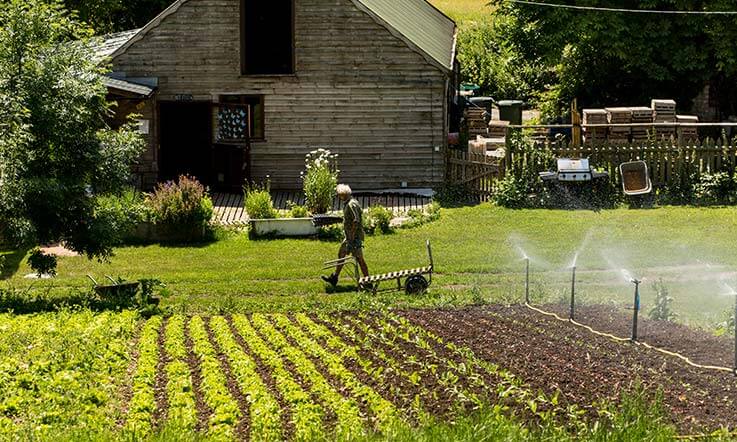Interesting results are emerging from this year’s cereal trials at Wakelyns Agroforestry. An accurate measure of straw yield in different trial entries was achieved by adapting a baler to produce ‘mini-bales’ of straw from a single plot (see photograph). Gathering straw yield data is needed to increase understanding of the trade-off between vegetative growth and grain yield. Conventional plant breeders have long been selecting in favour of grain; however for organic breeders both straw and grain yield are considered to be important outputs because higher straw yield has been linked to increased weed competition, nutrient usage and cycling of organic matter. A target for organic breeding could therefore be to identify the potential for breeding varieties to provide higher straw yield whilst maintaining a high grain yield.
Initial results from the QUOATS project this year suggest selecting for both straw and grain yield may be possible, with varieties such as Mascani demonstrating high levels of both (Figure 1).
Winter wheat trials in which new lines selected under organic conditions were compared to the high yielding pure line Alchemy also showed interesting results. Although Alchemy had the highest average grain yield it was not statistically greater than the four highest lines including Line 3 which did have significantly greater straw yield (figure 2).
A more in-depth analysis will investigate which components of vegetative growth, for example crop height or canopy cover at different times of the season, have the most significant impact on weed competition.
Competitive ability relating to the suppression of weeds must, however, be traded-off against intra-crop competition which can limit grain yields. Crop traits such as erect or planophile leaves (Figure 3) which affect the shade cast by the crop canopy can influence this.
Observations of plot yield data across the hazel alleys indicate that the hazel hedges have a negative effect on cereal yields, but this appears to be limited to an edge strip of about 2-3m from the hedge itself. Overall, this means that the yield in an alley may be about 8% less than if the hedges were absent. However, the overall cereal yields were about 7 tonnes per hectare, considerably more than average organic cereal yields. What we don’t know is how much of that gain is due to the rotational system at Wakelyns or to possible positive effects from the presence of the hazel hedges (shelter, higher temperature, nutrient cycling etc.). It could well be that there is a net positive effect of the hazels on cereal yields, despite those obvious edge effects. More research is needed!
